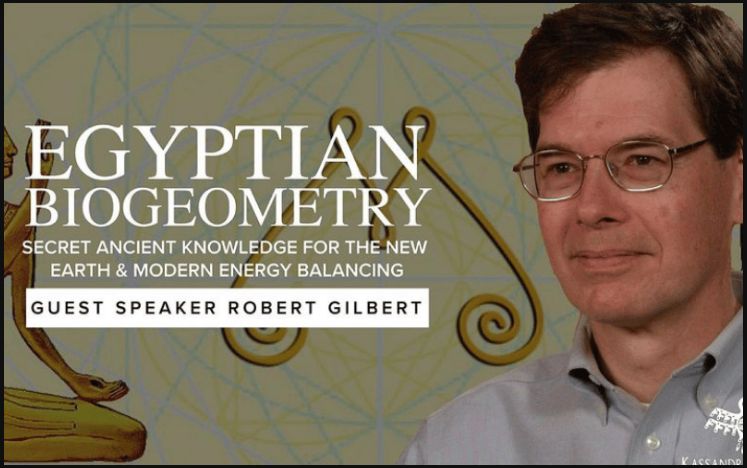Bio Geometry Overview Dr Robert Gilbert
How geometric forms affect life functions.
part 1 of 2
https://www.youtube.com/watch?v=E036Ydhmdz4
part 2 of 2
https://www.youtube.com/watch?v=Cw2mJ9IQge4
Published on Jun 6, 2013
An excellent overview by Dr. Gilbert on BioGeometry — from the Special Topics conference in Asheville, NC, November 2012.
Another video w/ Gilbert
https://www.youtube.com/watch?v=fandWUXhk3U
BioGeometry, developed by Dr. Ibrahim Karim, is a science that studies the interactions between living organisms and their environments through the use of geometric forms, shapes, and patterns. Dr. Robert Gilbert is a prominent figure in the field of BioGeometry and has contributed significantly to its development and popularization. Here is an overview of BioGeometry based on Dr. Robert Gilbert’s work:
1. Principles of BioGeometry: BioGeometry is based on the principle that geometric forms and patterns have inherent qualities and energetic effects that can interact with living systems. These geometric qualities are believed to be present in all aspects of nature and can be harnessed to promote health, harmony, and balance.
2. Three Qualities of Geometric Shapes: According to BioGeometry, geometric shapes can be categorized into three basic qualities: BG3, BG2, and BG1. BG3 shapes are associated with negative effects and disharmony, BG2 shapes are neutral, and BG1 shapes are associated with positive effects and harmony. By using BG1 shapes, it is believed that beneficial effects can be achieved in the environment and within living organisms.
3. Applications in Design and Architecture: BioGeometry principles can be applied to various fields, including architecture, design, agriculture, and urban planning. By incorporating specific geometric shapes and patterns into the design of buildings, spaces, and landscapes, it is believed that BioGeometry can enhance the well-being and vitality of occupants and ecosystems.
4. Applications in Health and Wellness: BioGeometry is also applied in the field of health and wellness, where it is used to balance the energy systems of the body and promote holistic healing. Techniques such as BioSignatures and BioSignatures II, which involve the use of specific geometric patterns and symbols, are used to harmonize the body’s energy fields and address imbalances that may lead to disease or discomfort.
5. Research and Education: Dr. Robert Gilbert and other practitioners of BioGeometry conduct research and offer educational programs to teach individuals how to apply BioGeometry principles in their personal and professional lives. Workshops, seminars, and certification programs are available to those interested in learning more about this field.

Overall, BioGeometry offers a unique approach to understanding and enhancing the relationship between living organisms and their environments through the intelligent use of geometric forms and patterns. Dr. Robert Gilbert’s contributions have played a significant role in advancing the field and making its principles accessible to a wider audience.
BioGeometry is a discipline that deals with the energy of shapes and how these shapes can have a beneficial effect on human well-being and the environment. Dr. Robert Gilbert is a prominent figure in the field of BioGeometry, having extensively studied, practiced, and taught the principles and applications of this unique discipline. BioGeometry was originally developed by Dr. Ibrahim Karim from Cairo, Egypt, and it integrates science, art, and spirituality to understand how the energy of shapes and forms influences living systems.
Principles of BioGeometry
BioGeometry is built on the understanding that certain geometric shapes can emit energy patterns that have positive effects on biological systems. These shapes can help balance the energies within a space or organism, promoting health, well-being, and harmony. The discipline uses a variety of tools, symbols, and techniques to apply these shapes in different contexts, from architecture and design to personal wellness products.
Key Concepts
– BG3: This is a central concept in BioGeometry, referring to a specific spectrum of energy qualities found in sacred power spots and which are believed to be beneficial for living beings. BG3 energies are said to balance the energetic systems of the body, promote healing, and harmonize the interactions between the environment and the individual.
– Energy Balancing: BioGeometry also focuses on balancing the energies within an environment to neutralize the effects of potentially harmful electromagnetic fields and other environmental stressors.
– Practical Applications: The principles of BioGeometry have been applied in various fields, including architecture, interior design, agriculture, and product design. For instance, designing spaces or creating objects that incorporate beneficial geometric patterns to support health and environmental harmony.
Dr. Robert Gilbert’s Contributions
Dr. Gilbert has played a significant role in bringing BioGeometry to a wider audience, especially in the English-speaking world. His contributions include:
– Education and Training: Offering courses and training programs on BioGeometry, helping to educate people on its principles and practical applications.
– **Research and Development**: Engaging in research to explore and validate the effects of BioGeometry on health, environmental quality, and energy systems.
– Publications and Speaking: Dr. Gilbert has written and spoken extensively on BioGeometry, its foundations, and its implications for health and spiritual development.
Criticism and Skepticism
Like many alternative sciences, BioGeometry faces skepticism from the mainstream scientific community, which often demands empirical evidence and reproducible results under controlled conditions. Critics argue that the claims of BioGeometry need more rigorous scientific validation.
Conclusion
BioGeometry represents an intriguing intersection of geometry, environmental studies, and energy medicine, proposing innovative ways to enhance well-being and environmental harmony through the conscious application of shapes and forms. Through the efforts of Dr. Robert Gilbert and others in the field, BioGeometry continues to grow, offering a unique perspective on the subtle energies that influence health and the environment.